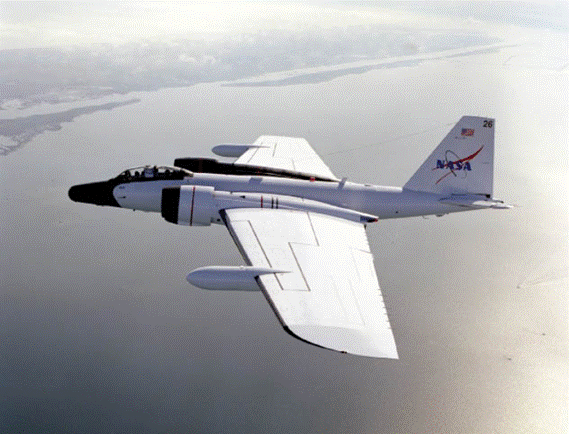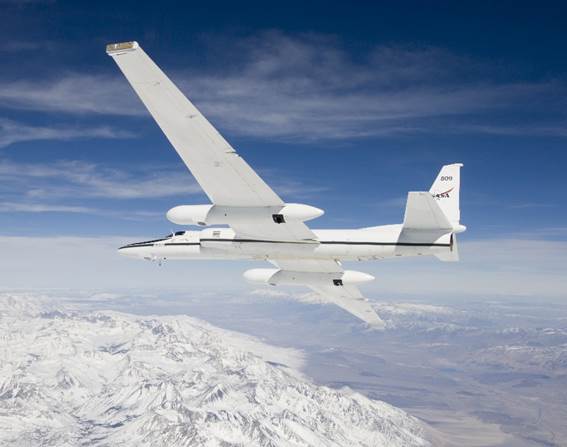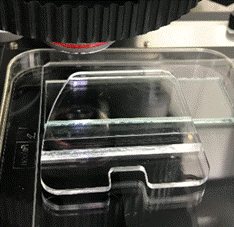Aircraft Collected Particles (ACP) Collection
Many tons of dust grains, including samples of asteroids and comets, fall from space onto the Earth's atmosphere each day. One of the ways cosmic dust can be collected is with high-flying aircraft outfitted with clean collector plates outfitted with either foam or a sticky silicone oil. These plates are protected within the aircraft and are only deployed at high altitude (Figure 1), above most of the terrestrial contaminants naturally present in the atmosphere. NASA has been collecting cosmic dust in this way since 1981 for the Aircraft Collected Particle (ACP) Collection. The current count of flown collectors stands at nearly 600, with nearly 7,500 individual particles (of all types) curated. Particles in this collection are either retained on their collectors or removed, washed (if captured in oil), individually mounted, characterized using scanning electron microscopy (SEM) and electron dispersive spectroscopy (EDS), and then described in the Cosmic Dust catalog and made available for request.



Figure 1: A NASA WB-57 (TOP) and ER-2 (BOTTOM) aircraft used to collect IDPs from the Earth's atmosphere for the Aircraft Collected Particle (ACP) collection. NASA's high altitude aircraft collect cosmic dust by deploying flat-plate collectors, catching these particles before they descend to lower altitudes where terrestrial contaminants abound. Inset: One of the oil-coated flat plate collectors used to collect ACP particles.
Historically, most ACP collections have been performed at random times, with collector plates flown until they accrued sufficient flight time to reliably contain cosmic dust particles. However, ever since Dermott and Liou (1994) proposed that there should be enhancements in certain types of asteroidal dust at certain times of the year, we have endeavored to build up a collection of collection surfaces targeted at different times throughout the year. We have made targeted collections (or “Timed Collections“) of the stratosphere in attempts to collect dust from specific comets (Tempel-Tuttle, Giabobini-Zinner, and Grigg-Skjellerup; Messenger 2002 as well as dust from asteroid families. We consider these efforts to be long shots, since the enhancements of the comet dust over background extraterrestrial material are not terribly large. Still we have made a special effort to provide these collection surfaces to the community, since the potential payoffs from successfully locating comet dust from a known source are so great. We will continue to attempt to collect dust from specific solar system bodies as opportunities arise.
The following ACP flights attempted to collect material from a specific meteor shower/parent body. Note that to date ~600 separate collectors have been exposed for collection of cosmic dust, and some of them may also contain material from specific meteor showers due to the date they were exposed. Contact the Curator if you would like to search through existing collectors for a specific collection time.

NASA maintains the Cosmic Dust Collections to provide carefully collected cosmic dust to scientists around the world for research purposes. Samples may be requested for scientific research any time throughout the year by contacting the Curator with a written request. Details on how to select samples and submit the request are available HERE. Contact the Curator with questions or assistance in placing a request.
